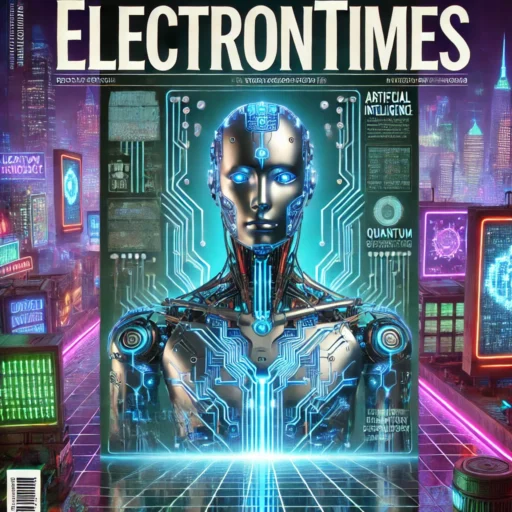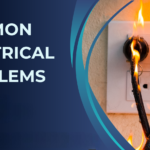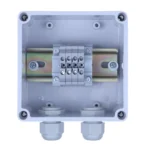The electronics and electrical equipment industry, while experiencing significant growth and technological advancement, faces several key challenges today. These challenges impact various aspects of the industry, from supply chains to sustainability. Here are some of the most critical challenges:
1. Supply Chain Disruptions
- Global Supply Chain Vulnerabilities: The electronics industry relies heavily on global supply chains for raw materials, components, and assembly. Disruptions—due to geopolitical tensions, trade restrictions, pandemics (like COVID-19), or natural disasters—can cause delays in production, shortages of critical components (such as semiconductors), and increased costs.
- Semiconductor Shortages: The global semiconductor shortage, which began in 2020, has been one of the most prominent issues, affecting everything from smartphones to automobiles. This shortage has highlighted the industry’s reliance on a few countries (especially Taiwan) for semiconductor production and the need for more diversified and resilient supply chains.
2. Rising Raw Material Costs and Scarcity
- Increased Demand for Rare Materials: The electronics industry depends on raw materials such as rare earth metals (e.g., lithium, cobalt, and palladium) for producing components like batteries, semiconductors, and displays. Rising demand for these materials—especially with the growth of electric vehicles (EVs) and renewable energy technologies—has led to price volatility and concerns about resource scarcity.
- Price Volatility: Fluctuating prices for key materials, driven by supply-demand imbalances and geopolitical issues (e.g., trade restrictions with China), can impact production costs and profit margins.
3. Environmental and Sustainability Concerns
- E-Waste Management: The rapid pace of technological innovation has led to a significant increase in electronic waste (e-waste). Improper disposal of e-waste is harmful to the environment, and the industry faces increasing pressure to develop sustainable practices for recycling, reusing, and reducing waste.
- Carbon Footprint: As the global focus shifts toward sustainability, companies in the electronics and electrical equipment industry are under pressure to reduce their carbon footprint. Manufacturing processes, energy consumption, and product life cycles all contribute to greenhouse gas emissions, and businesses must adopt greener practices.
- Sustainable Sourcing: As demand for renewable energy technologies grows, there is greater scrutiny on the sourcing of materials, particularly those used in solar panels, batteries, and electric vehicles. Ethical sourcing of raw materials and ensuring sustainable production practices is a growing challenge.
4. Technological Obsolescence and Rapid Innovation
- Short Product Lifecycles: The electronics industry is characterized by rapid technological advancements, which often lead to short product lifecycles. Companies must constantly innovate to remain competitive, but this can lead to high research and development (R&D) costs and the challenge of predicting market needs.
- Keeping Up with Innovation: The pace of innovation in areas like AI, IoT, 5G, and quantum computing means that companies must invest heavily in R&D to stay ahead. The speed of technological change creates a challenge for businesses to continuously update and upgrade their product offerings.
5. Intellectual Property (IP) and Cybersecurity Risks
- Intellectual Property Protection: The electronics industry is highly competitive, with companies constantly innovating and developing new technologies. Protecting intellectual property (IP) is a significant challenge, especially in regions with weaker IP enforcement. Patent infringement disputes and counterfeiting are ongoing issues.
- Cybersecurity Threats: As the industry becomes increasingly interconnected, particularly with the rise of IoT and smart devices, cybersecurity threats have become a growing concern. Vulnerabilities in hardware, software, and networks can compromise both consumer data and operational processes.
6. Labor and Skill Shortages
- Skilled Workforce Shortage: The rapid advancement of technologies in areas like AI, robotics, and semiconductor manufacturing requires a highly skilled workforce. However, there is often a shortage of qualified engineers, technicians, and other professionals with the necessary expertise.
- Labor Costs and Automation: In many regions, the rising cost of labor and the need for automation in manufacturing processes are driving businesses to adopt more robotic solutions. While this can increase efficiency, it also leads to job displacement and the need for upskilling in the workforce.
7. Geopolitical and Trade Tensions
- Global Trade Disputes: The electronics industry is deeply affected by international trade relations, especially between major economies like the U.S., China, and the EU. Trade tariffs, export restrictions, and sanctions on key technologies (e.g., semiconductor technology) can disrupt manufacturing and limit market access.
- Regional Regulatory Differences: Different countries and regions have varying standards and regulations for electronics products, which can create barriers to trade. Companies must navigate complex regulatory environments to ensure compliance with safety, environmental, and cybersecurity standards.
8. Competition and Price Pressure
- Price Wars and Margin Pressure: Intense competition in the consumer electronics sector, especially in markets like smartphones, wearables, and home appliances, leads to price wars and shrinking profit margins. Companies must find ways to reduce costs without compromising product quality.
- Price Sensitivity: Consumers are increasingly price-sensitive, particularly in emerging markets, where lower-cost alternatives can drive down demand for premium products. The pressure to offer affordable products while maintaining quality and profitability is a constant challenge.
9. Integration of Emerging Technologies
- 5G and IoT Deployment: The integration of emerging technologies like 5G, IoT, and edge computing requires significant investment in infrastructure and new hardware. This includes the challenge of upgrading existing systems, addressing interoperability issues, and ensuring that new technologies are scalable.
- AI and Automation Integration: While AI and automation have the potential to transform the industry, integrating these technologies into existing products and manufacturing processes can be costly and technically challenging. Additionally, concerns around AI ethics and data privacy must be addressed.
10. Regulatory and Compliance Pressures
- Increasing Regulations: Governments around the world are implementing stricter regulations concerning safety, energy efficiency, recycling, and consumer privacy. Adapting to these regulatory requirements adds complexity and cost to the development and manufacturing of electronics and electrical equipment.
- Environmental Regulations: As global environmental standards become more stringent, companies must adapt their processes to comply with regulations aimed at reducing environmental impact, such as carbon emissions, waste management, and use of hazardous materials.
Conclusion
The electronics and electrical equipment industry faces a dynamic set of challenges, including supply chain disruptions, raw material costs, sustainability issues, technological obsolescence, cybersecurity risks, and geopolitical tensions. However, these challenges also present opportunities for innovation, such as developing sustainable practices, improving manufacturing automation, and leading the way in emerging technologies like AI, 5G, and renewable energy. Companies that can successfully navigate these challenges will be better positioned for long-term success in a highly competitive market.
Hashtags
#SupplyChainCrisis #SupplyChainIssues #GlobalSupplyChain #ChipShortage #LogisticsChallenges #SupplyChainResilience #SustainableTech #GreenElectronics #EcoFriendlyTech #CircularEconomy #SustainabilityInTech #GreenManufacturing #SemiconductorShortage #ChipShortage #TechChipShortage #ChipSupplyIssues #TechManufacturing #SiliconShortage #RisingCosts #TechInflation #RawMaterialCost #CostofProduction #EconomicChallenges #CyberSecurity #TechSecurity #DataProtection #CyberAttack #SecureTech #CyberRisk #LaborShortage #WorkforceChallenges #SkilledLabor #TechTalentShortage #LaborForce #HiringChallenges #TechInnovation #TechDisruption #InnovationPressure #TechDevelopment #EmergingTechnologies #AIandAutomation














